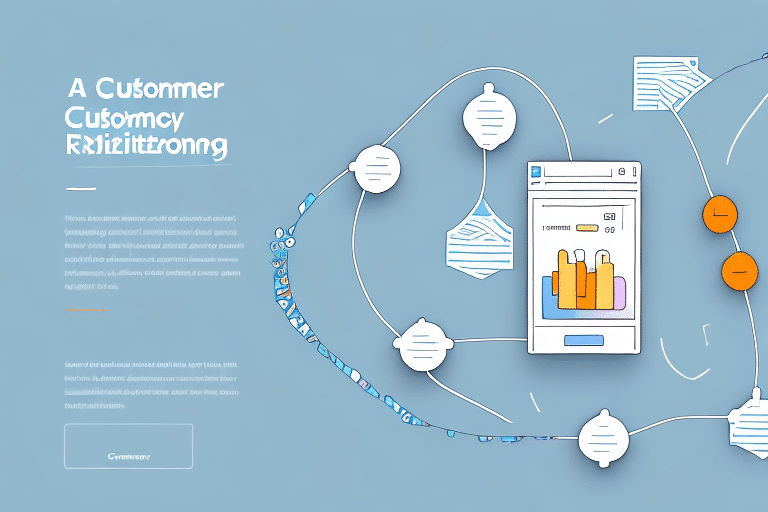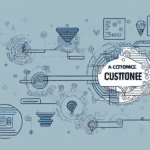Enhance Customer Retention with Custom Tracking Notifications
In today's competitive market, improving customer retention is paramount for sustained revenue and profitability. Leveraging custom tracking notifications is an effective strategy to foster loyalty and keep customers engaged. This comprehensive guide explores the significance of custom tracking notifications, their various types, personalization techniques, best practices, measurement methods, and future trends to help your business thrive.
Importance of Customer Retention for Business Success
Customer retention is a critical metric for business growth. Retaining existing customers is significantly more cost-effective than acquiring new ones. According to a Harvard Business Review study, increasing customer retention rates by 5% can lead to an increase in profits of 25% to 95%. Loyal customers are more likely to make repeat purchases, advocate for your brand, and provide valuable feedback, all of which contribute to long-term success.
- Cost Efficiency: Reducing marketing and acquisition costs by focusing on existing customers.
- Revenue Growth: Loyal customers tend to spend more over time and are open to new offerings.
- Brand Advocacy: Satisfied customers are more likely to refer others, enhancing your brand reputation.
The Role of Notifications in Enhancing Customer Retention
Notifications serve as a direct channel of communication between businesses and customers. Custom tracking notifications, specifically, keep customers informed about their orders, fostering trust and reliability. These notifications not only improve the customer experience but also provide opportunities for upselling and cross-selling, thereby increasing the customer lifetime value.
- Order Tracking: Real-time updates on order status enhance transparency.
- Promotional Alerts: Informing customers about new products and exclusive offers.
- Personalized Recommendations: Tailoring suggestions based on purchase history.
Types of Custom Tracking Notifications
Implementing a variety of tracking notifications ensures comprehensive communication throughout the customer journey. Key types include:
- Order Confirmation: Immediate acknowledgment of a purchase.
- Shipping Confirmation: Notification when the order is dispatched.
- Delivery Confirmation: Confirmation of order delivery.
- Out for Delivery: Real-time updates as the order approaches.
- Order Updates: Notifications about any changes or delays.
- Returns and Refunds: Clear communication during the return process.
Balancing the frequency and timing of these notifications is crucial to avoid overwhelming customers while keeping them adequately informed.
Personalizing Tracking Notifications for Optimal Engagement
Personalization transforms generic notifications into meaningful customer interactions. Utilizing data such as customer names, purchase history, and preferences allows businesses to tailor messages effectively. Personalized notifications can include:
- Dynamic Content: Customized product recommendations and exclusive offers.
- Preferred Communication Channels: Allowing customers to choose between email, SMS, or push notifications.
- Behavior-Based Triggers: Sending notifications based on specific customer actions.
For instance, incorporating the customer’s name and specific order details can make notifications feel more relevant and appreciated, thereby enhancing engagement.
Best Practices for Implementing Custom Tracking Notifications
Adhering to best practices ensures that your tracking notifications are effective and well-received:
- Clarity and Conciseness: Provide essential information without overwhelming the recipient.
- Visual Appeal: Use brand-consistent colors and imagery to create visually engaging notifications.
- Timeliness: Ensure notifications are sent at appropriate times relevant to the customer’s journey.
- Personalization: Tailor notifications to individual customer preferences and behaviors.
- Mobile Optimization: Design notifications to be responsive and easily readable on mobile devices.
Measuring the Effectiveness of Your Tracking Notifications
Evaluating the performance of your tracking notifications is essential for continuous improvement. Key metrics to monitor include:
- Open Rates: Percentage of recipients who open the notification.
- Click-Through Rates (CTR): Number of clicks generated from the notification.
- Conversion Rates: Percentage of recipients who complete a desired action.
- Customer Feedback: Insights from customer reviews and surveys.
Analyzing these metrics helps in refining your notification strategy. Utilizing tools like HubSpot or Mailchimp can aid in tracking and optimizing these performance indicators.
Common Pitfalls to Avoid with Custom Tracking Notifications
While custom tracking notifications offer numerous benefits, certain mistakes can undermine their effectiveness:
- Over-Notification: Bombarding customers with too many messages can lead to annoyance and unsubscribe rates.
- Lack of Personalization: Generic messages fail to engage and resonate with customers.
- Poor Timing: Sending notifications at inconvenient times can reduce their impact.
- Non-Mobile Friendly Designs: Notifications not optimized for mobile devices can frustrate users.
Ensuring a balanced approach and focusing on quality over quantity can help avoid these common challenges.
Success Stories: Companies Excelling with Custom Tracking Notifications
Examining how leading companies utilize custom tracking notifications provides valuable insights:
- Amazon: Utilizes real-time delivery notifications, allowing customers to track orders accurately and receive timely updates.
- ASOS: Engages customers with playful notifications featuring animated GIFs and personalized messages, enhancing the shopping experience.
- Uber: Sends timely notifications about driver arrival and ride status, reducing customer anxiety and improving satisfaction.
- Grubhub: Provides detailed order tracking from preparation to delivery, ensuring transparency and building trust with customers.
Future Trends in Customer Retention through Custom Tracking Notifications
The landscape of customer retention is evolving, with custom tracking notifications playing an increasingly pivotal role. Future trends include:
- AI and Machine Learning: Leveraging advanced algorithms to predict customer behavior and personalize notifications further.
- Interactive Notifications: Incorporating elements like surveys, polls, and direct response options to engage customers actively.
- Omni-Channel Integration: Seamlessly integrating notifications across multiple platforms for a unified customer experience.
- Enhanced Data Security: Prioritizing the protection of customer data to build and maintain trust.
Staying abreast of these trends and continuously innovating your notification strategies will ensure your business remains competitive and customer-centric.
Integrating Custom Tracking Notifications into Your Marketing Strategy
Seamlessly incorporating custom tracking notifications into your broader marketing strategy can amplify their effectiveness. Here’s how:
- Define Objectives: Clearly outline what you aim to achieve with your notifications, such as increased retention or higher sales.
- Select Platforms: Decide on the channels (email, SMS, push notifications) that best reach your target audience.
- Develop Infrastructure: Utilize marketing automation tools like ActiveCampaign to manage and automate your notifications.
- Set Benchmarks: Establish key performance indicators (KPIs) to measure success.
- Continuous Optimization: Regularly review performance data and iterate on your strategies for better results.
Essential Tools and Resources for Creating Custom Tracking Notifications
Numerous tools and resources can aid in crafting effective custom tracking notifications:
- Marketing Automation Platforms: Tools like HubSpot, Mailchimp, and ActiveCampaign offer robust features for creating and managing notifications.
- Analytics Tools: Platforms such as Google Analytics help track and analyze notification performance.
- Educational Resources: Websites like Content Marketing Institute provide articles, webinars, and guides on best practices.
- Design Tools: Tools like Canva assist in creating visually appealing notification templates.
Utilizing these tools and resources can streamline the creation process and enhance the effectiveness of your custom tracking notifications.
Conclusion: The Strategic Advantage of Custom Tracking Notifications
Custom tracking notifications are a powerful tool for enhancing customer retention and building long-term relationships. By providing timely, personalized, and relevant updates, businesses can significantly improve customer satisfaction and loyalty. Integrating these notifications into your marketing strategy, adhering to best practices, and leveraging the right tools will position your business for sustained success in a competitive landscape.






















